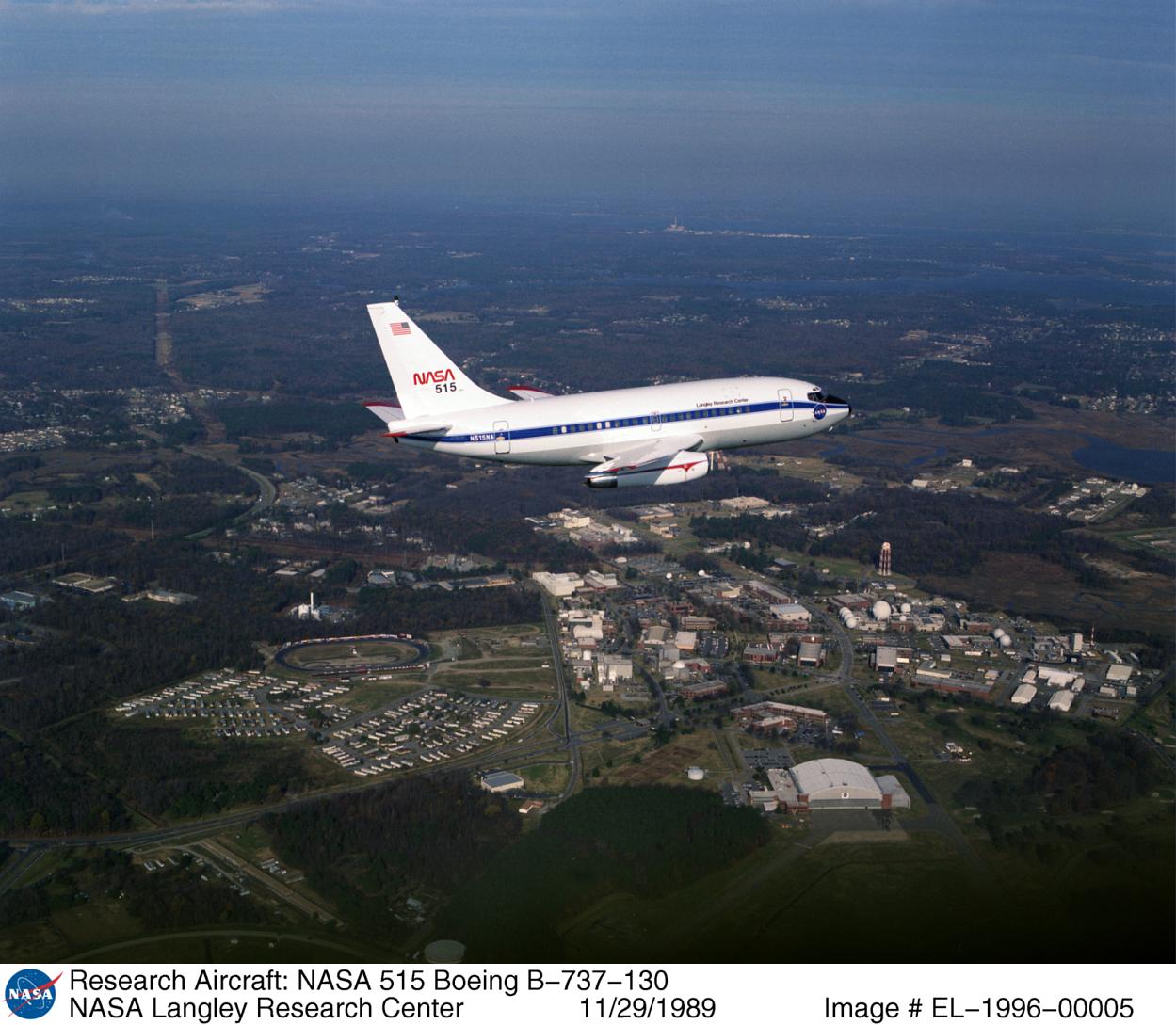
Flying over her new home.

 Joe Chambers
Joe ChambersAfter several years of Boeing flight test work, PA099 was placed in storage by Boeing for several years, until sold to the U.S. Government - National Aeronautics and Space Administration (NASA) as a flight test airplane on July 26, 1973. It had accumulated only 979 flying hours. . NASA had two blue and white color schemes over the life of the airplane. Their call sign was simply NASA 515. As a public use airplane, PA099 voluntarily became N515NA on the FAA registry.
NASA 515 was involved in numerous pioneering flight investigations including control systems, 3D and 4D navigation, in-flight energy management, computerized flight management systems, electronic displays, Microwave Landing System (MLS) development (overrun in late development by the advent of GPS,), slippery runway studies, and clear air turbulence and wind shear detection and warning.


The
airplane
has a second flight deck, fully functional, installed in the main
cabin,
that was used for much of the flying. Control systems used
included
the original Boeing control column/wheel, Brolly handles (like bicycle
handlebars), and the current side-stick controllers. Numerous
glass
cockpit CRT display configurations were tried, that attacked many
questions
regarding display arrangements, colors and symbology.
Much of
this
work wound up on Boeing, Douglas, and Airbus airplanes as well as the
Space
Shuttle. The airplane has a unique fourth hydraulic system
with a
reservoir, pump and filter system.

Other studies were
perfomed of
drag-reducing external coatings, cockpit displayed traffic information,
takeoff
performance monitoring, and precision flare guidance (during landing
touchdown.)

For a superb in-depth discussion of all these flight test studies, and many more, please refer to the outstanding book Airborne Trailblazer, written by Lane Wallace and released by NASA. This book is entirely devoted to the NASA flight tests performed using this historic aircraft, and it is available for reading on-line here.

Return to 737 Prototype Home Page
Return to Website Home Page
Revised:
04 Feb 2007
13 Apr 2007
16 Mar 2017